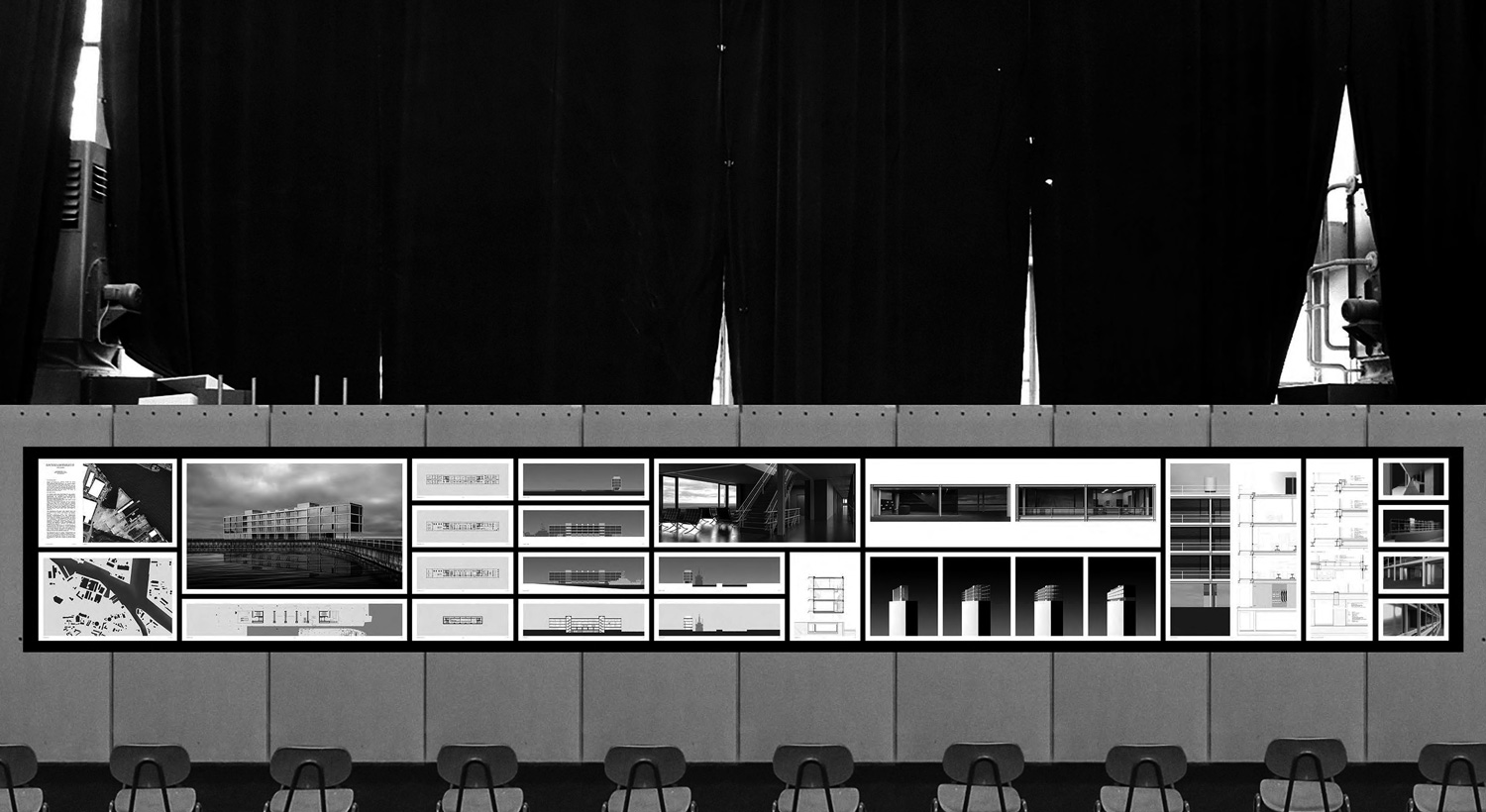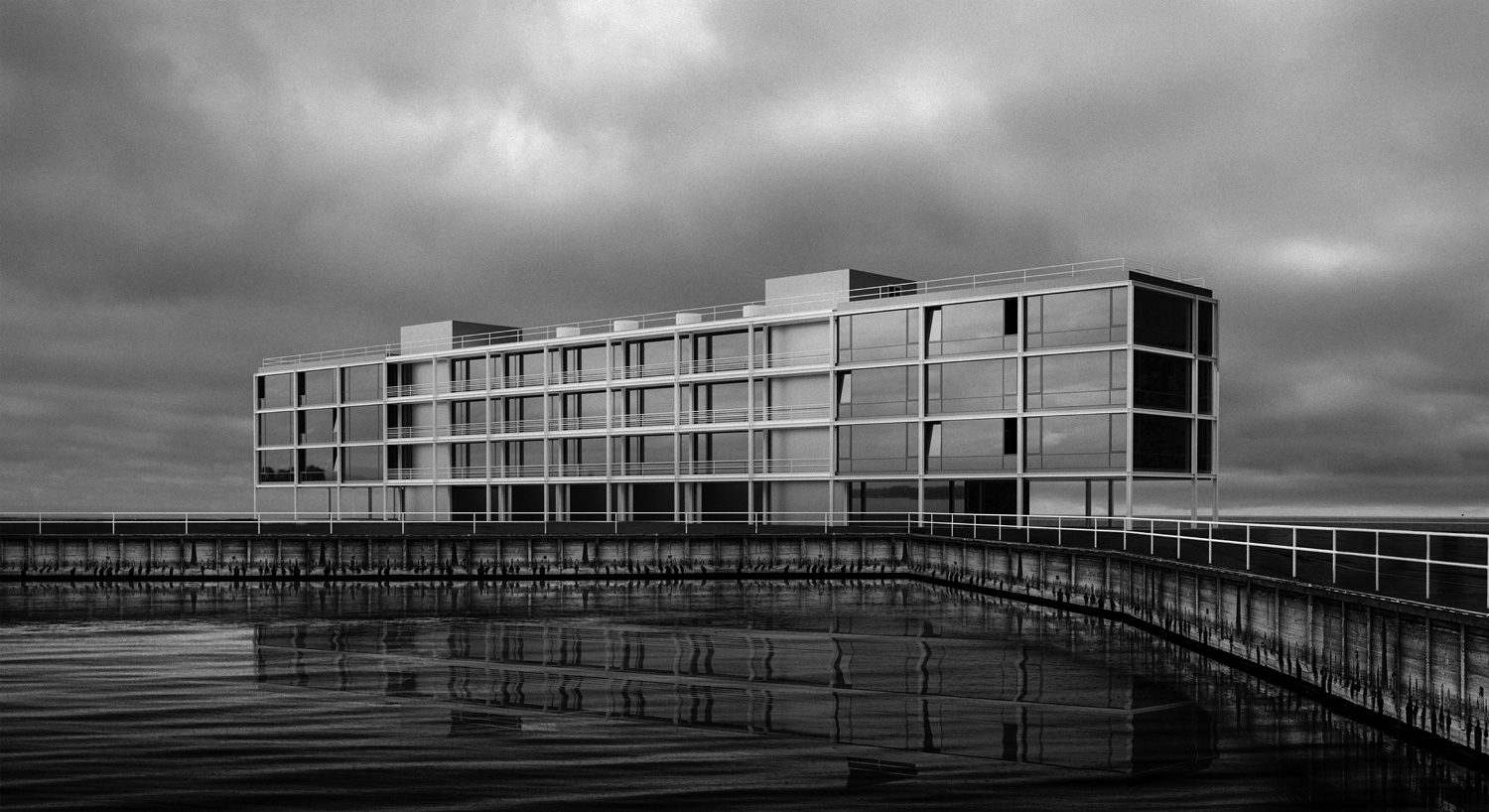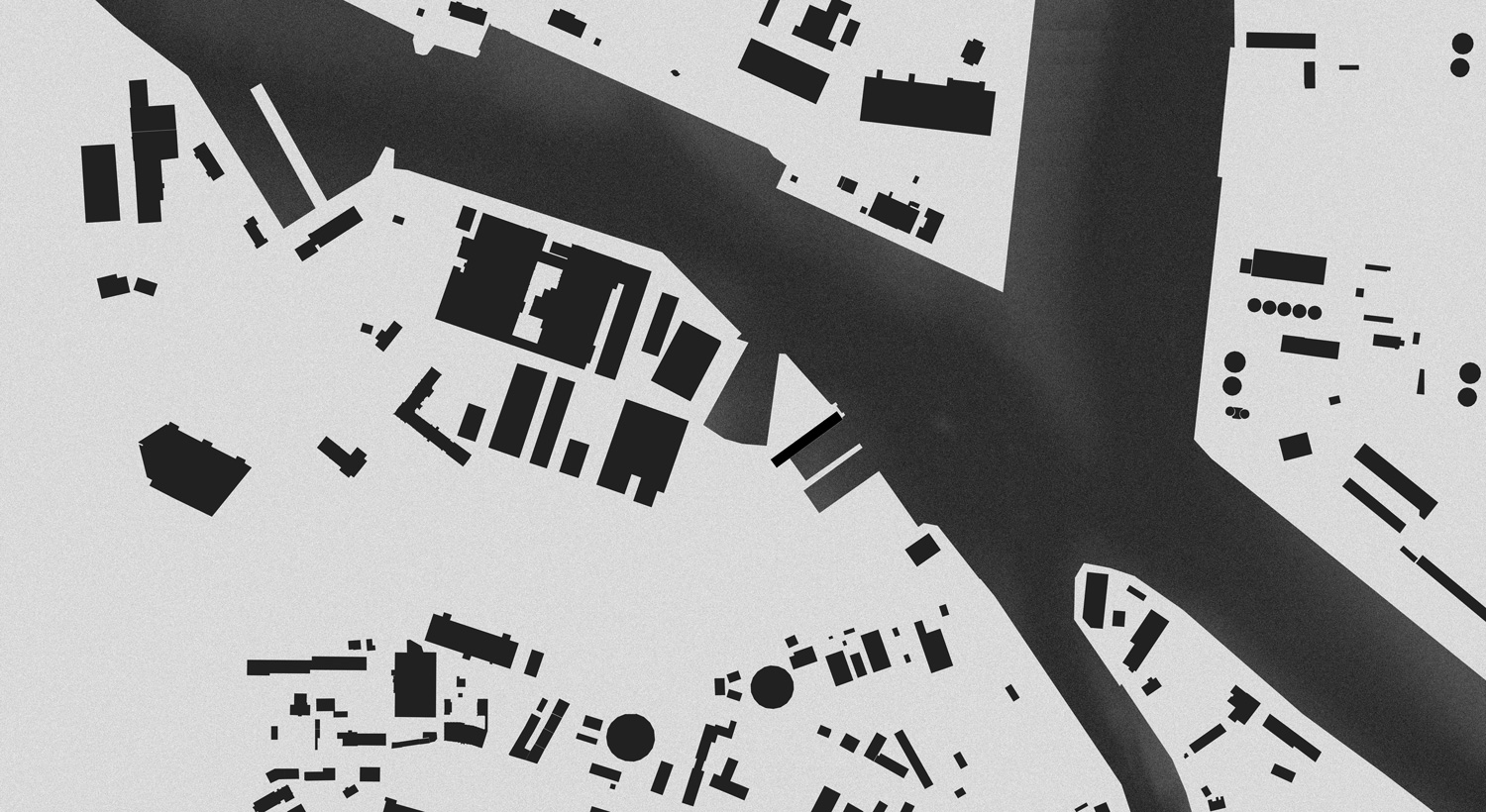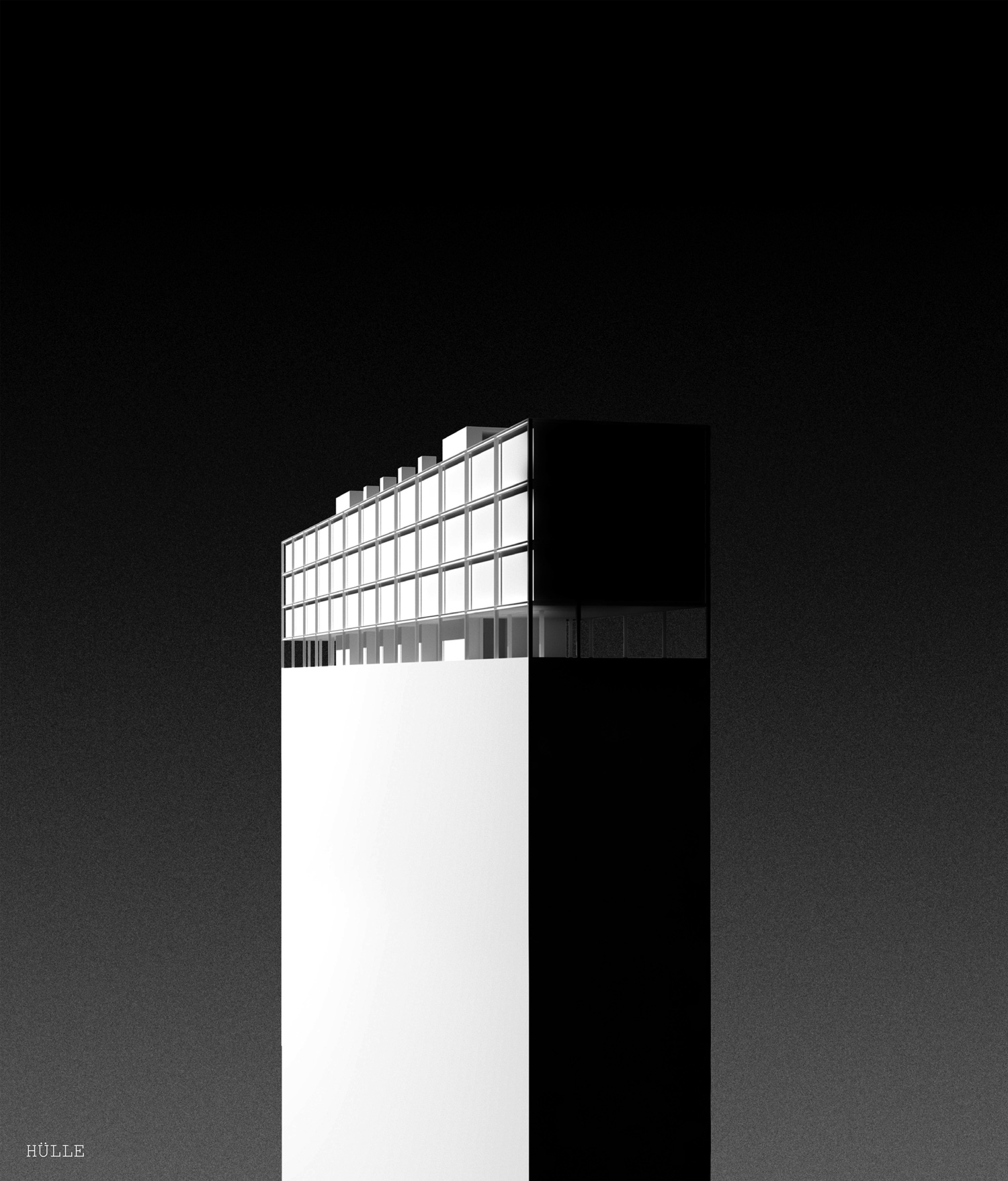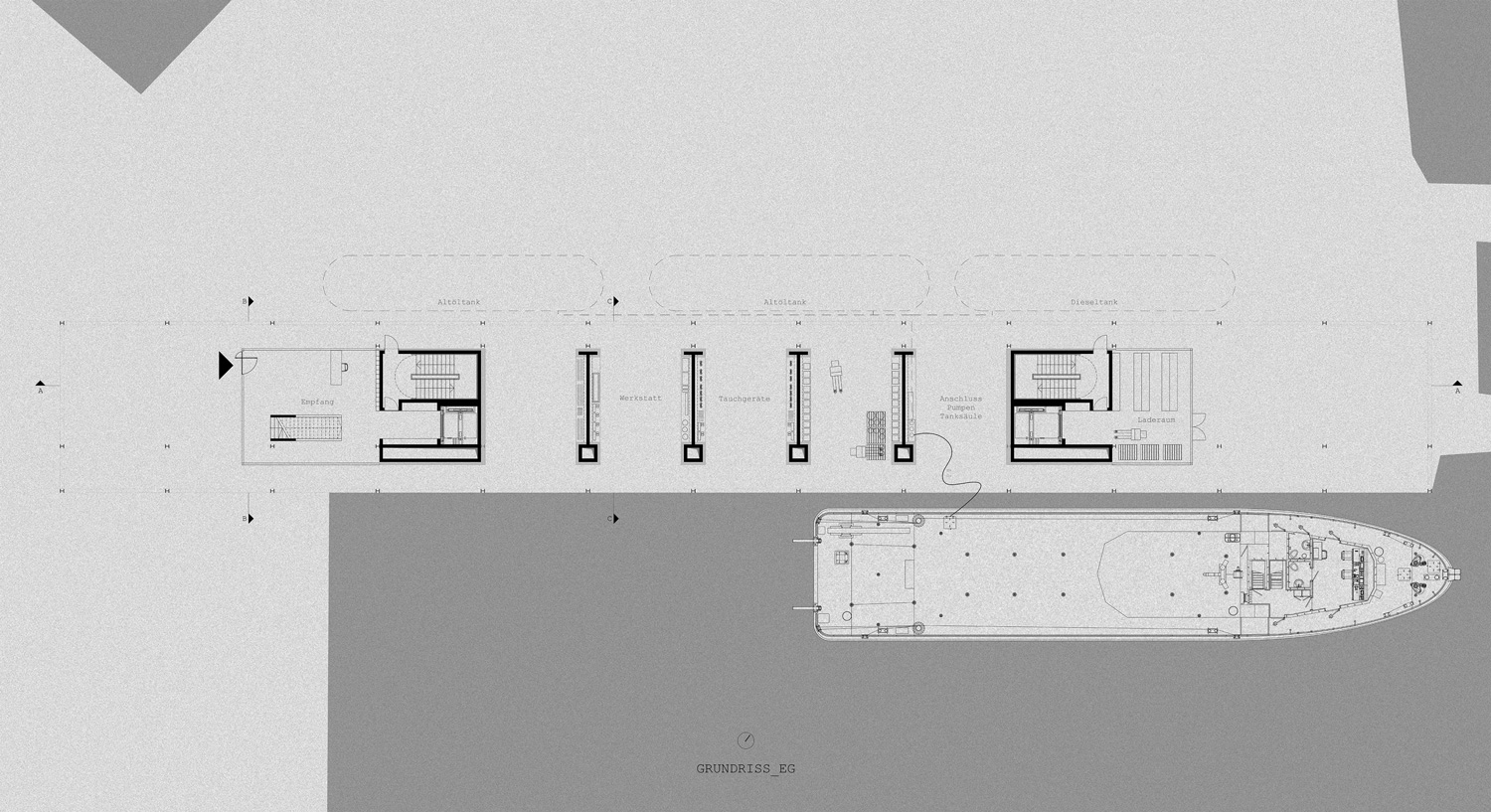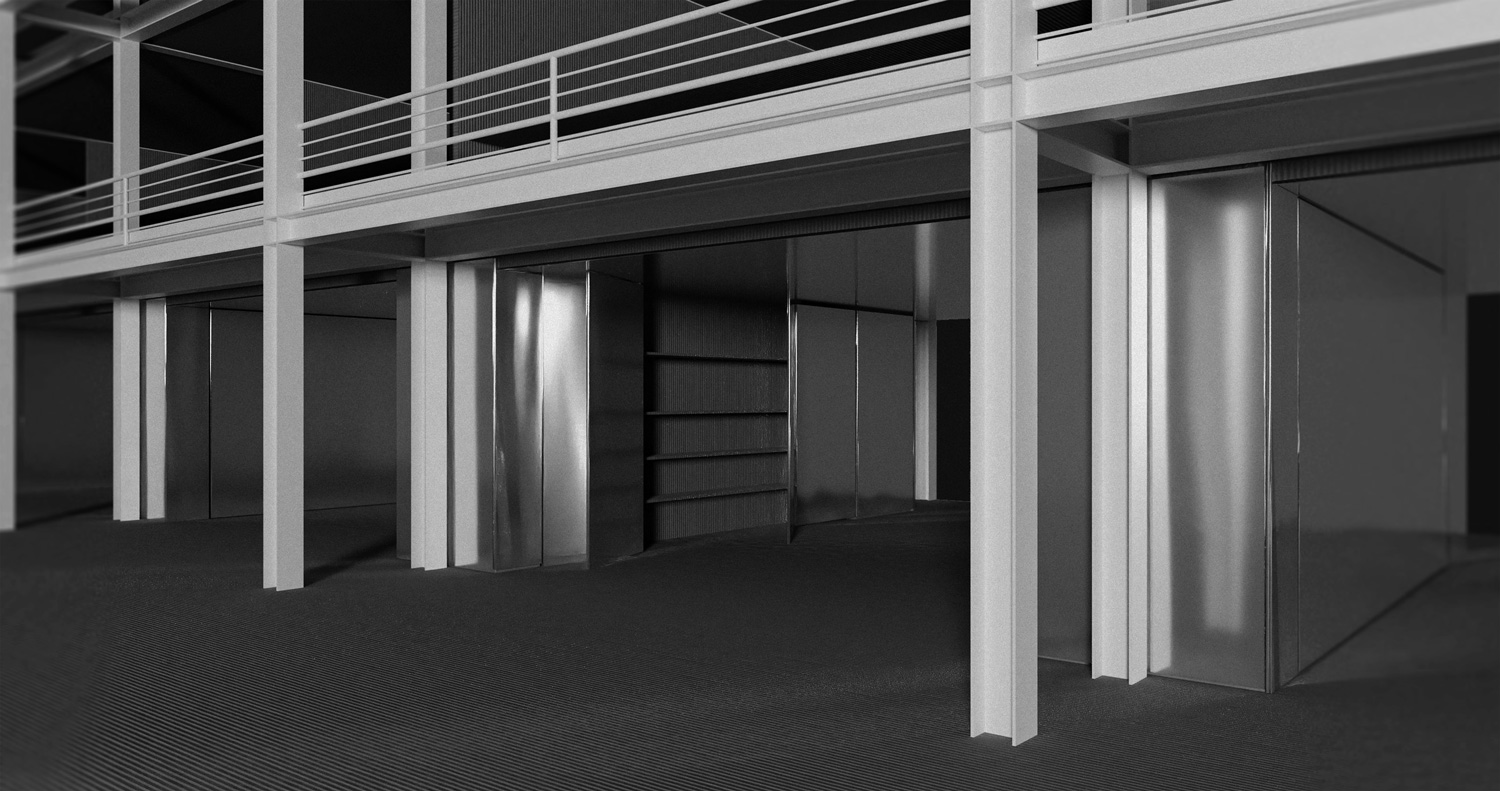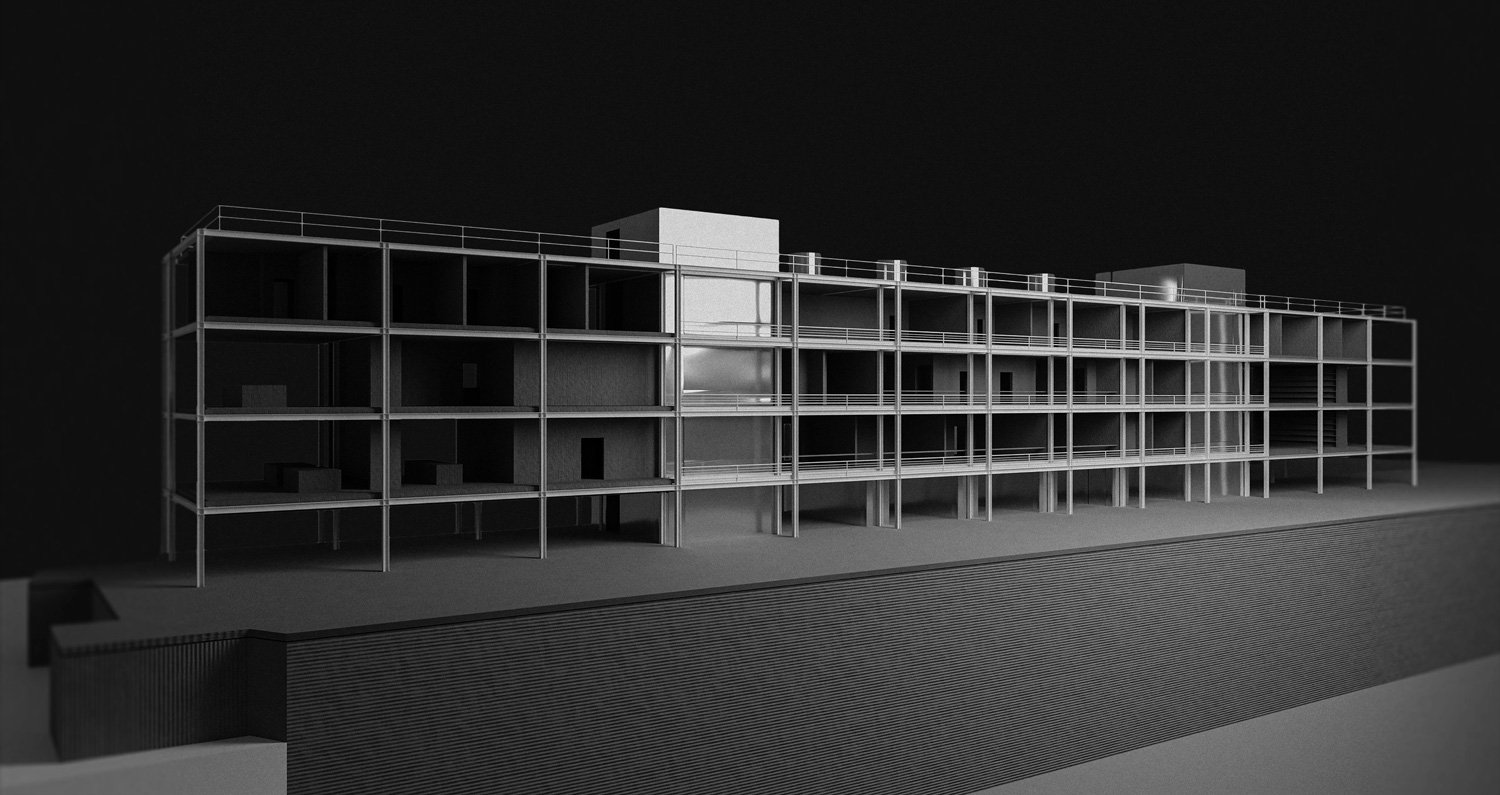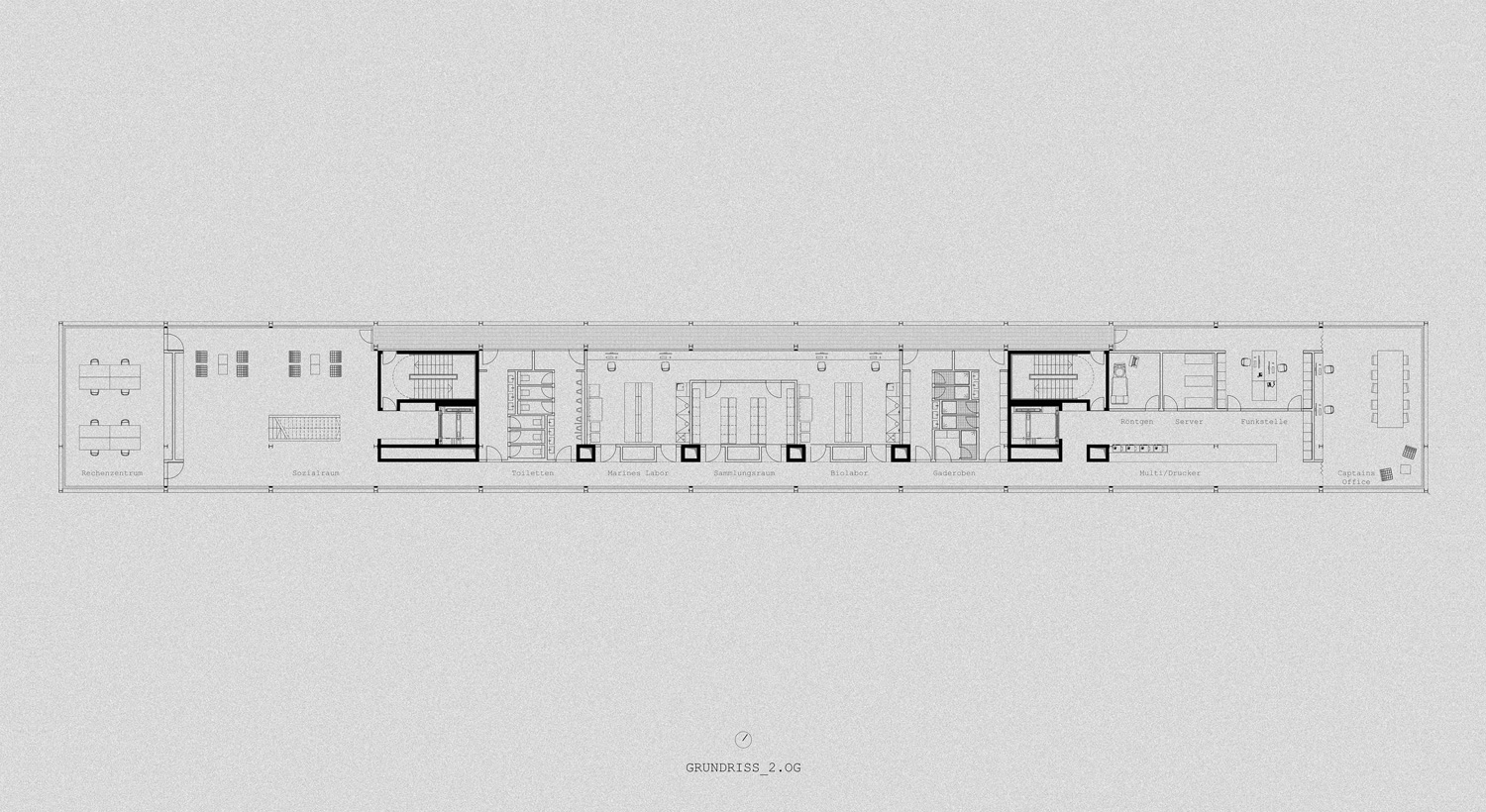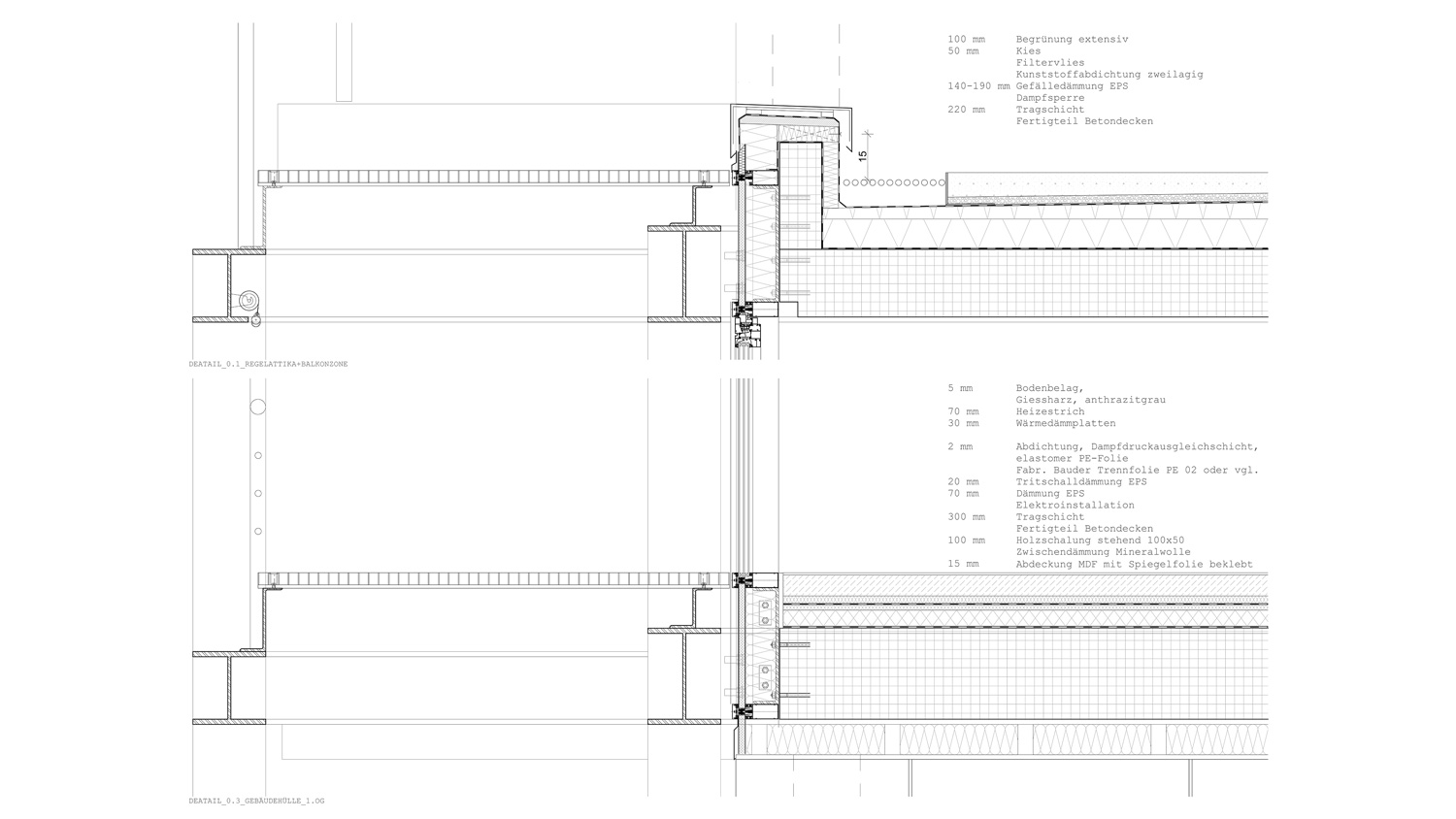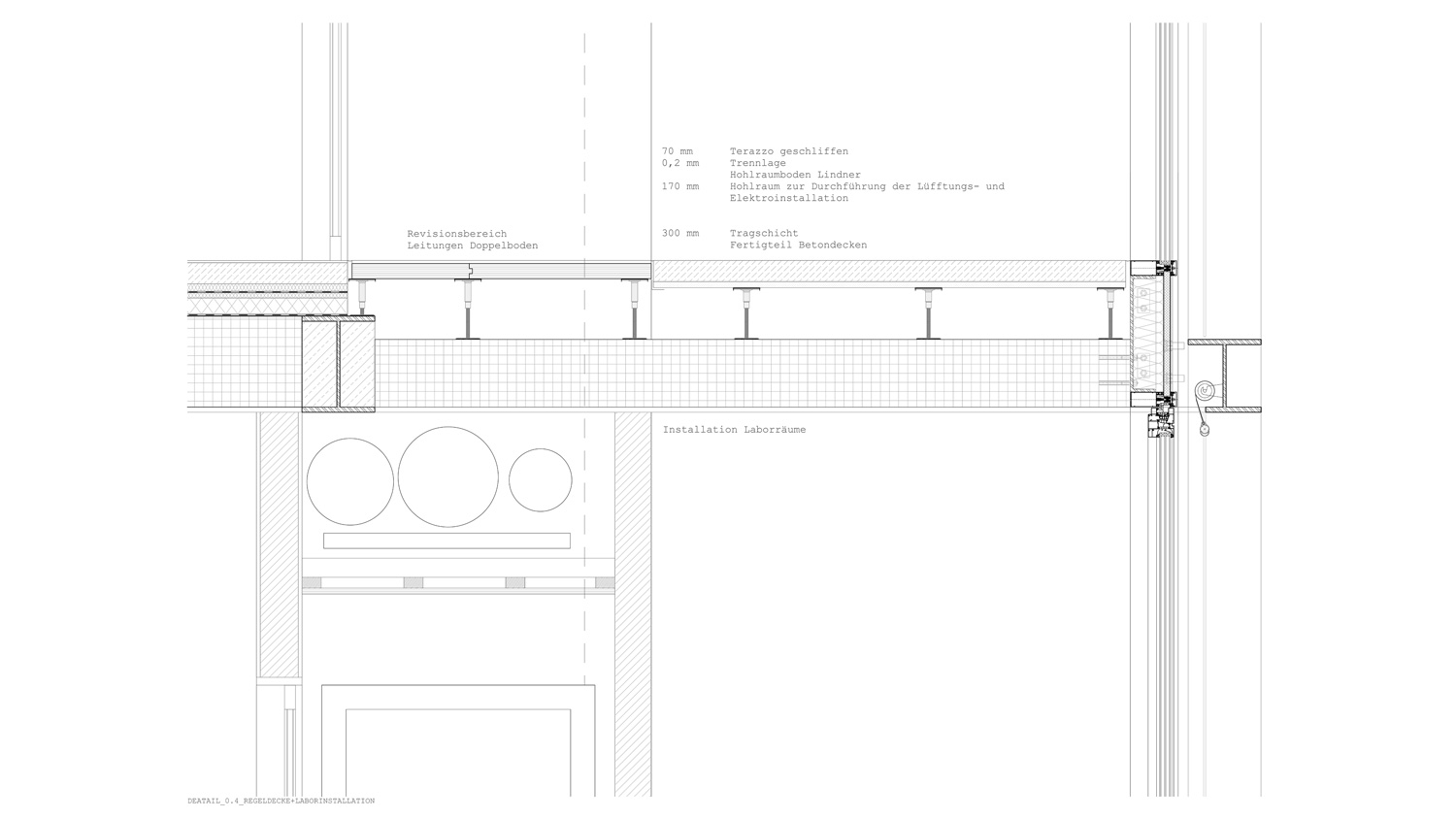1813-KAI-GDN.PL-2020.21
Client: OTH Regensburg
Status: Academic
Location: Gdansk, Poland
Coordinates: 54.3623333, 18.65969444
Climate: Temperate, Continental
Materials: Glass, Metal
Environments: Industrial, Seaside
Visualizer: Studio
Scale: 4.800 ㎡ Medium
Types: Education, Research center
Known for some of the most beautiful beaches in the whole country. Just how much longer?
The «Black Tears of the Sea». In other words, heavy oil. Legacies from the Second World War. They have been corroding for 70 years, but the critical point has now been reached. For this reason, something new is to be built on the largely disused shipyard district of Gdansk. A research institute for maritime research and the recovery of waste oil in shipwrecks from the Baltic Sea.
The first step
The building marks the starting point for the future. A fundamental design point is the urban reorganization of the extensive and undefined port area. The structure refers to the former typologies of the industry and allows the history of the place to continue. The long, narrow structure sits sharply on the harbor basin. He defines one Axis that divides the terrain and underlines the power of the individual areas. Another fundamental point is the very matter-of-fact, sober approach to the area and the topic itself. The building is based on the industrial environment. The strong grid of the building plays with the aesthetics and elegance of the reduced industrial buildings, and draws its own logic and elegance from this in this location.
The steel skeleton is complemented by two massive cores and some concrete shafts, which form the backbone of the building both structurally and in terms of use. The free ground floor forms a threshold space between the research building and the industrial wasteland. The entrance is formed by a glass cube, which clings to the core and draws the visitor inside. In addition, the ground floor is structured by a series of wall units that house materials, equipment and tools. The ground floor thus becomes an open transhipment point. The bottom view of the building as well as the cupboard walls are made of anodised aluminum and reflect the scenery in a shadowy way.
In order to support stronger communication of the areas of responsibility, the floor plan is divided into three areas that flow into one another. In the front area the theoretical work, a laboratory and supply zone and in the rear area a zone for the salvage. These are stacked vertically, allowing for random swapping between areas. The construction is designed as a lightweight steel skeleton structure with an external load-bearing structure. The institute is surrounded by a post and beam façade. This gives the building the impression of an elongated observation tower, which is just waiting to solve problems that shouldn’t actually exist.
